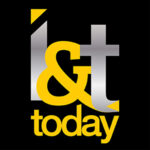Mechanical design engineering is used to create, develop, and ultimately manufacture new products and machinery that will shape the way we live, work and do business. It is a discipline that is both innovative and exciting as it is constantly pushing the boundaries of what is possible.
Many components, parts, and machinery that were once thought to be impossible to create are now achievable thanks to advances in mechanical design engineering technology. A good example of this continuing innovation in the field is the CATIA Mechanical Designer software from 3DS.
The CATIA software system now gives engineers, product developers, and mechanical designers the power to build more complex machinery and products than ever before. By using such technology, engineers and designers can improve existing products, create new designs based on older technologies, and come up with one-of-a-kind products that can be revolutionary.
The field of mechanical engineering consists of many different variations of the design process. In this article, we will take a look at three of the most common types of mechanical engineering and design processes.
Adaptive Design – Making Use of Existing Designs
The adaptive design process involves taking an existing component, piece of machinery, or design element and then adapting it to suit your own purposes. When using the adaptive design method, an engineer will modify the basic features of a part or component to ensure that they can be used for a particular application.
By making minor modifications to existing technologies, companies can save money and time. The adaptive design process is often more efficient and effective than developing a new product from the ground up.
Development Design – Improving on Existing Designs
Although it is similar in approach to the adaptive design method, the development design process differs in that it places a focus on adding or combining elements to existing designs to create an entirely new product.
This can be done by employing new manufacturing techniques, integrating new materials into existing products, or by modifying the actual components of an existing product or technology.
New Design – Creating a Unique Product
It must be said that the majority of mechanical design engineering can be categorized as following either an adaptive design process or a development design process. However, this does not mean that entirely new designs do not happen. Any truly unique design can be said to fall under the new design category.
While absolutely new designs do not occur every day, recent advances in technology and computing are making new designs more commonplace than ever before. That being said, there are some barriers to new designs, not least of which is the increased cost of research and development.
New designs are usually created by engineers who excel in technical skills and possess good problem-solving and analytical skills. Needless to say, any engineer who succeeds in developing a truly new design will soon find themselves much in demand!
Other Types of Mechanical Engineering and Design
While adaptive, development and new designs can be said to be the main three types of mechanical design engineering processes, this does not mean they are the only ones. Some other common types of mechanical engineering and design include:
- Rational design – The process of creating designs by utilizing mathematical formulae based on mechanical principles.
- Empirical design – Creating designs based on empirical formulae that draw on past experiences.
- Industrial design – Producing mechanical parts and components to address specific industrial needs.
- Computer-aided design – Creating analyzing and modifying 3D models using powerful computer software.
Anyone that is involved in creating products will need to understand the basic types of mechanical engineering and design. A good knowledge of these processes will ensure that engineers can develop products and components that are reliable, efficient, and effective.
As we proceed further into a highly digitized future, it is no exaggeration to say that our world is shaped by mechanical design engineering processes. Moving through the 21st century and beyond, we are sure to see many more groundbreaking developments as a result of mechanical design engineering.











